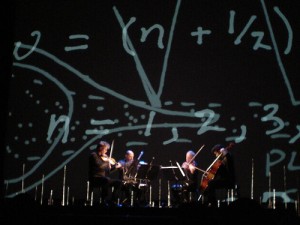 Sunday’s New York Times article on the Kronos Quartet reminded me of one early step on the beginning of my pilgrimage as a community engagement advocate. (Kronos Quartet’s 40-Year Adventure) Over 35 years ago, I had coffee with David Harrington in a small café across the street from the Eastman Theatre. I was a doctoral student at Eastman and the Quartet was doing a residency at the school. I had been blown away by a concert of theirs (some contemporary work and a Brahms quartet if memory serve me correctly). I also knew a bit about their origins (some of which included playing in bars in San Francisco) and I was fascinated.
Sunday’s New York Times article on the Kronos Quartet reminded me of one early step on the beginning of my pilgrimage as a community engagement advocate. (Kronos Quartet’s 40-Year Adventure) Over 35 years ago, I had coffee with David Harrington in a small café across the street from the Eastman Theatre. I was a doctoral student at Eastman and the Quartet was doing a residency at the school. I had been blown away by a concert of theirs (some contemporary work and a Brahms quartet if memory serve me correctly). I also knew a bit about their origins (some of which included playing in bars in San Francisco) and I was fascinated.
For those who don’t know their work, Kronos has become the premiere advocate for contemporary string quartet music, especially music that pushes the boundaries of music, incorporating amplification, lighting effects. They are also strong advocates for “crossover” music. One of my favorite albums of all time is their “Pieces of Africa.” (And, of course, no musician’s life is complete without hearing one of their performances of George Crumb’s Black Angels.)
However, beyond my admiration for their music making, the thing that prompts me to comment on them here is their ongoing awareness of the need to connect with the public at large. This largely comes from the entrepreneur’s awareness of the need to nurture an audience, but it also derives from a commitment to being “of the world.” The Times cites the Quartet’s sometimes political orientation in concerts and quotes Mr. Harrington as saying, “I’ve not lost my appetite for ensuring that, of all the string quartets in the world, I’m intending to have the largest F.B.I. file.” This awareness of the communities in which they work has led them to become, as I sometimes joke, one of the few chamber music ensembles in the world that has groupies. (It’s true. They do.) They were criticized, especially early on, for being gimmicky. Even if that were true, their musicianship and the quality of the new works they have fostered has made them an invaluable part of the world’s music scene. And, the evidence of operating successfully as concert and recording artists for forty years is further indication that their art has staying power. Engagement and artistic excellence are not mutually exclusive.
At the risk of repeating myself, I do need to point out that the interest of this blog lies mainly with arts organizations. No individual artist (or artist ensemble) need follow an engagement path. At the same time, there is evidence that, for those who choose to, there is merit (and potential for success–artistically and otherwise) in doing so.
Engage!
Doug
Photo:![]()
![]()
![]() Some rights reserved by OtterFreak
Some rights reserved by OtterFreak
